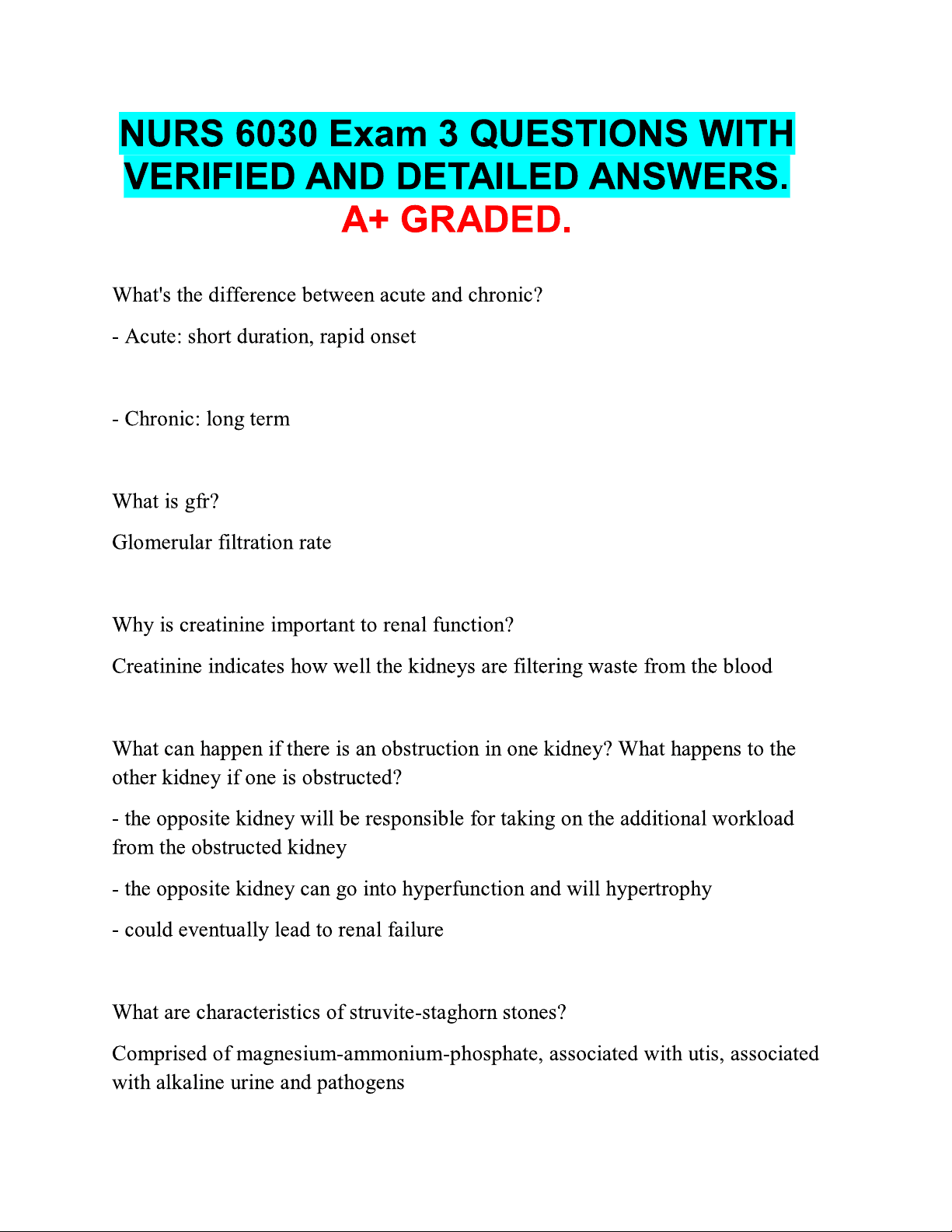
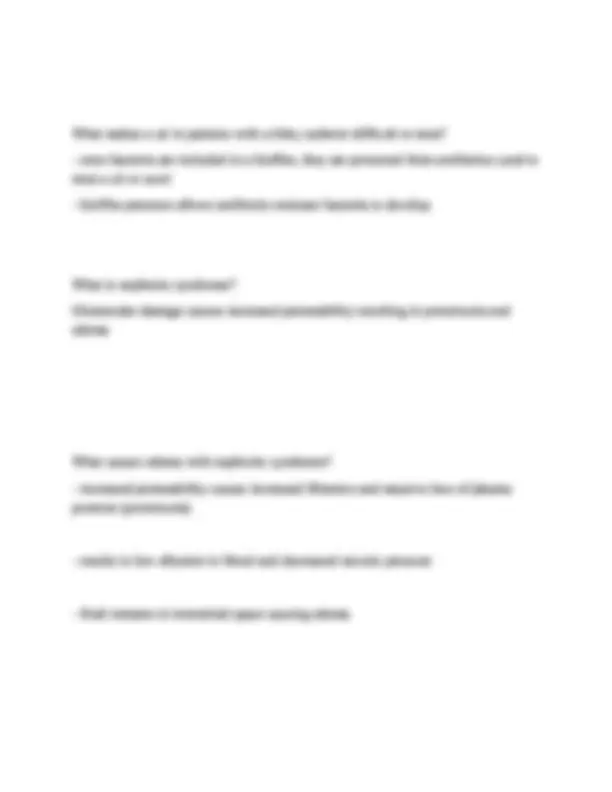
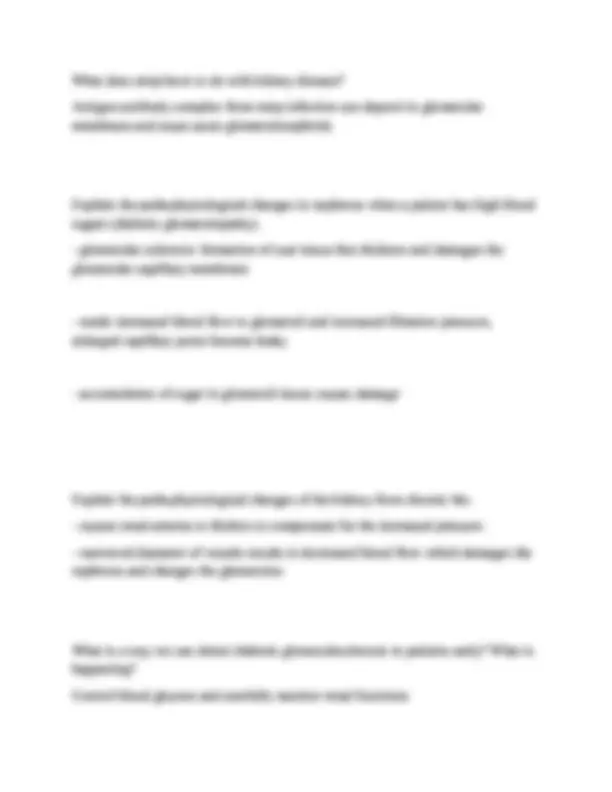
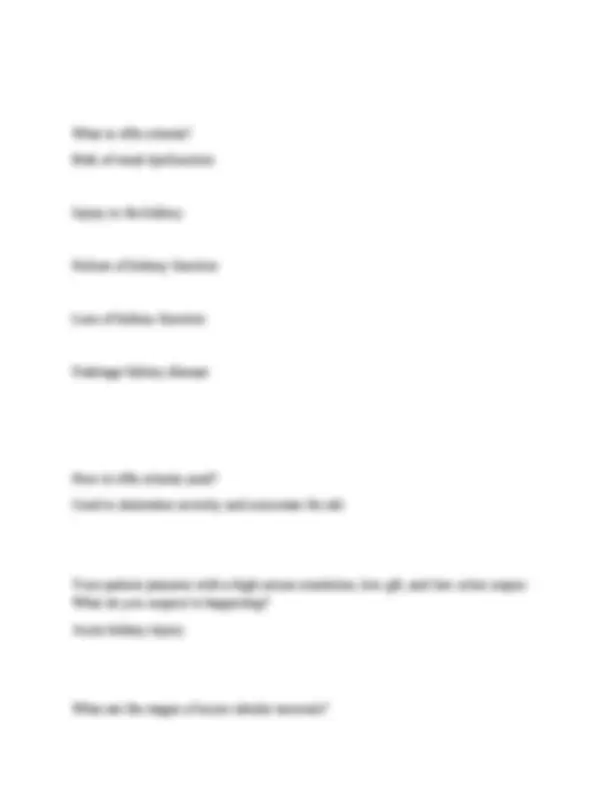
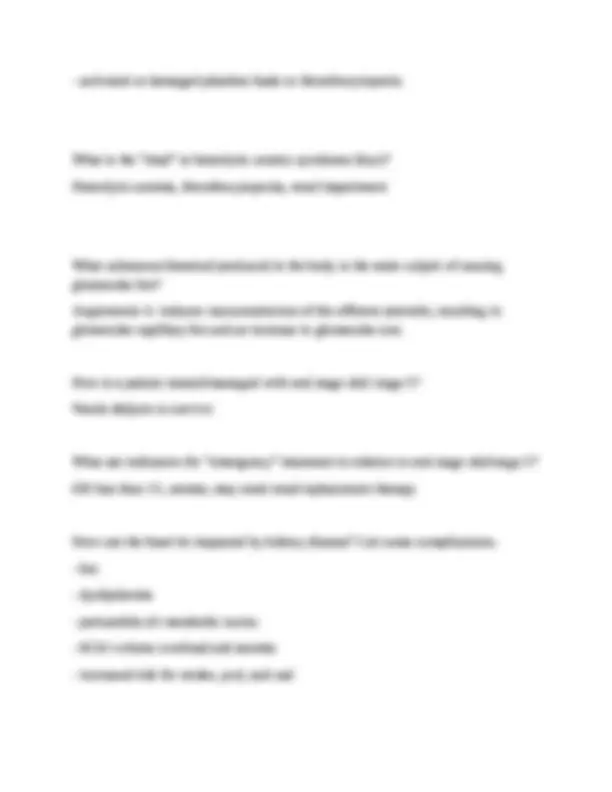
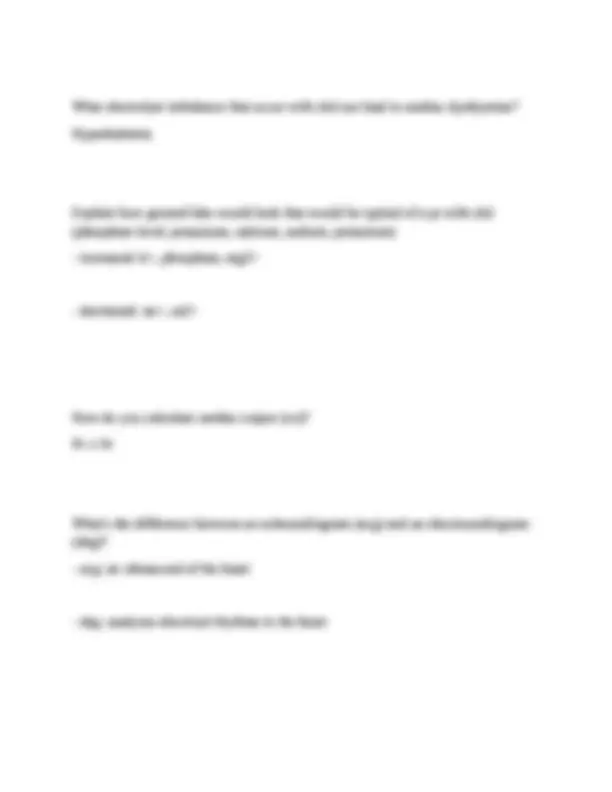
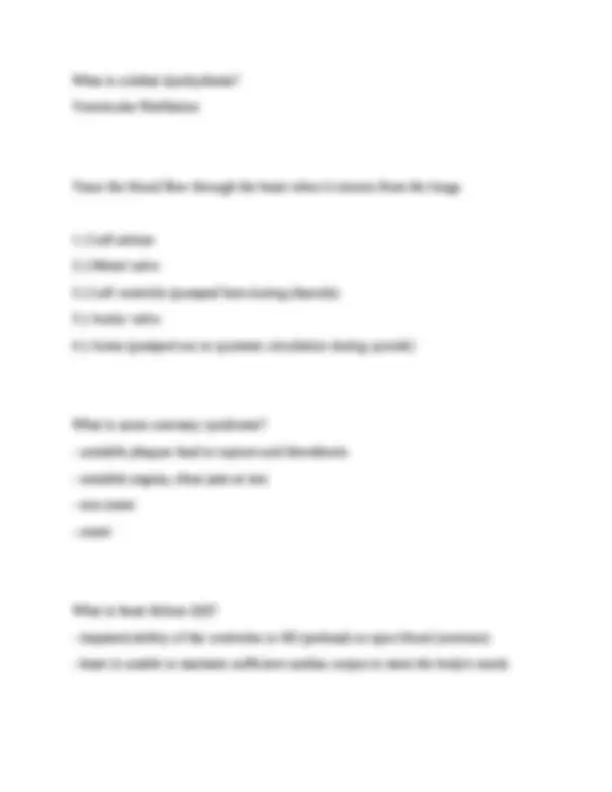
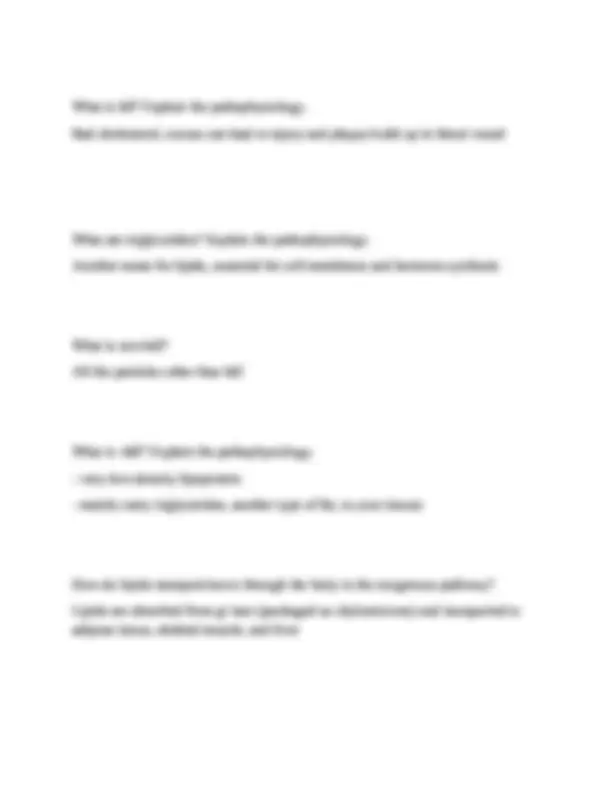
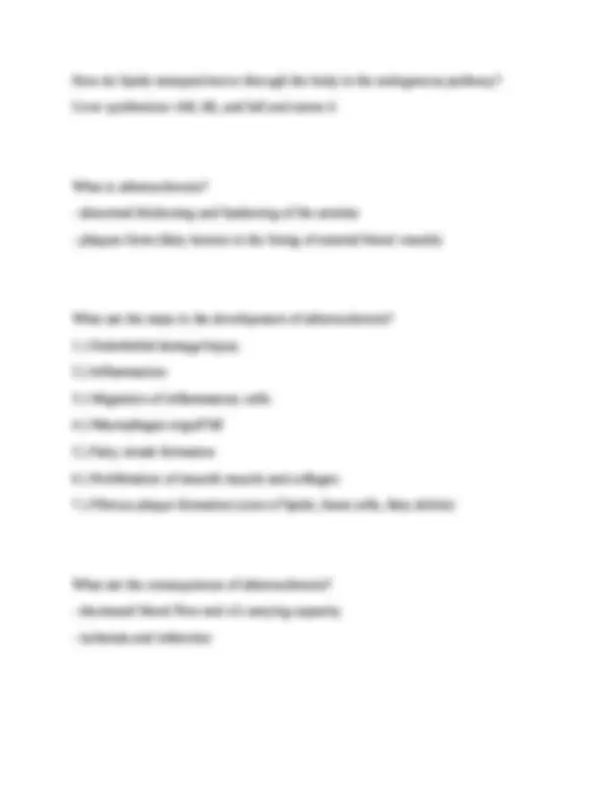
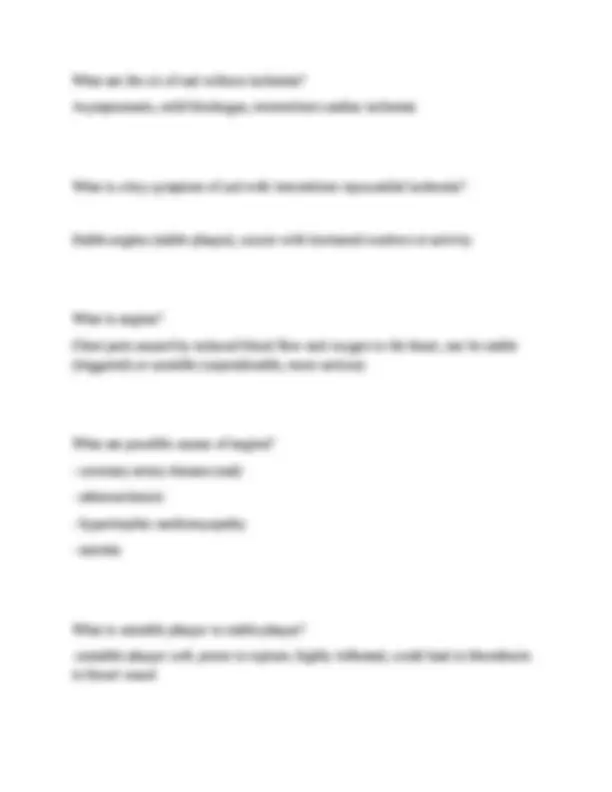
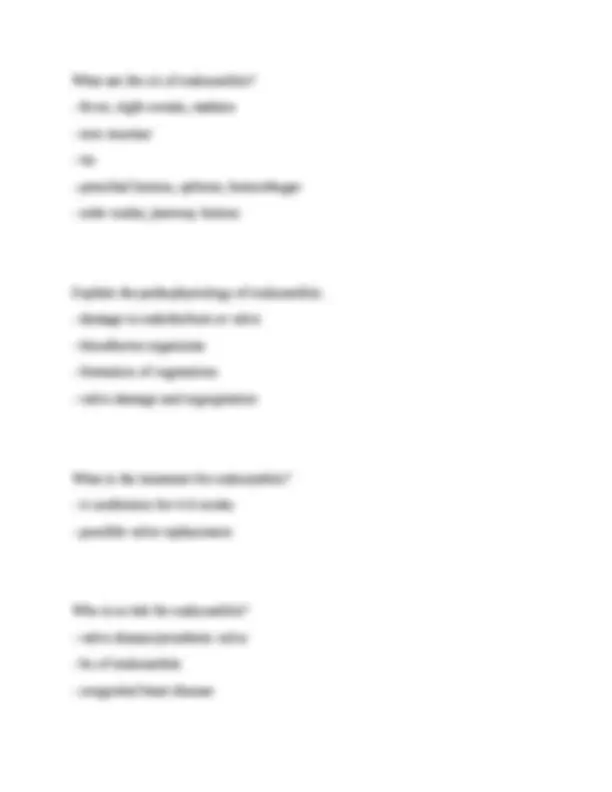
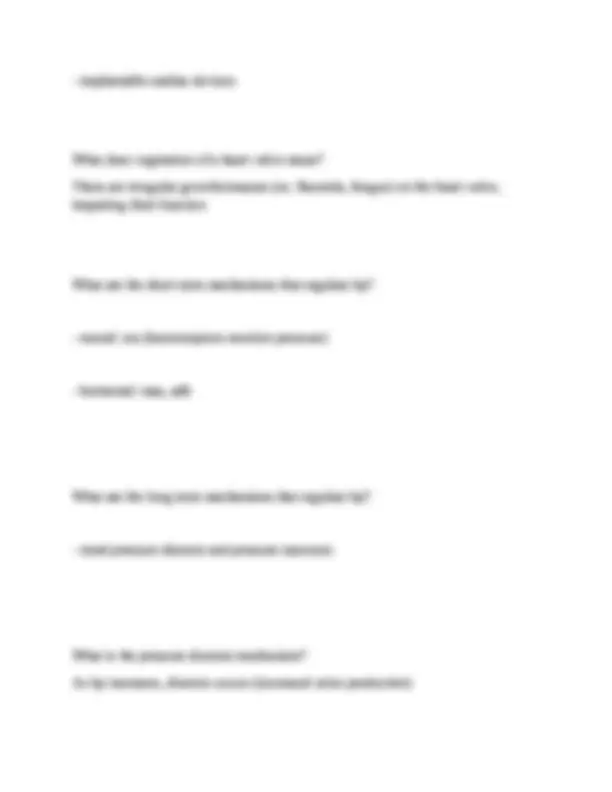
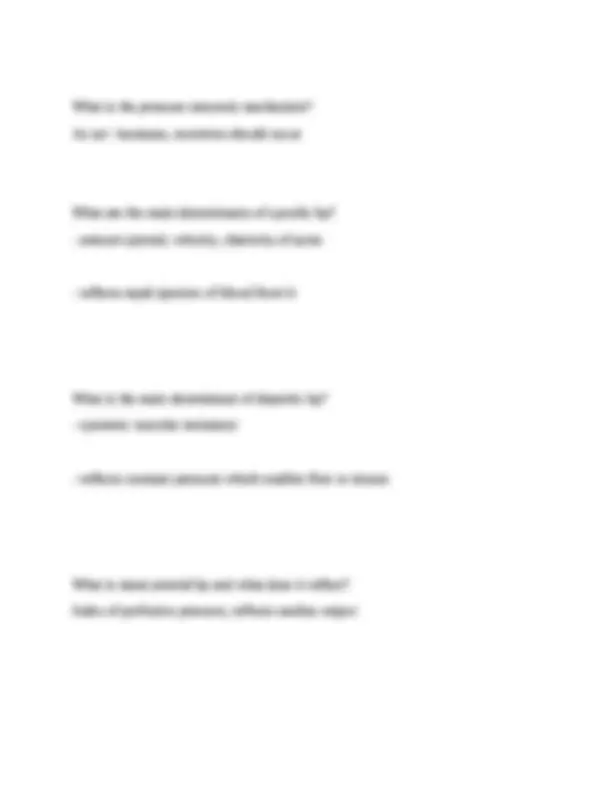
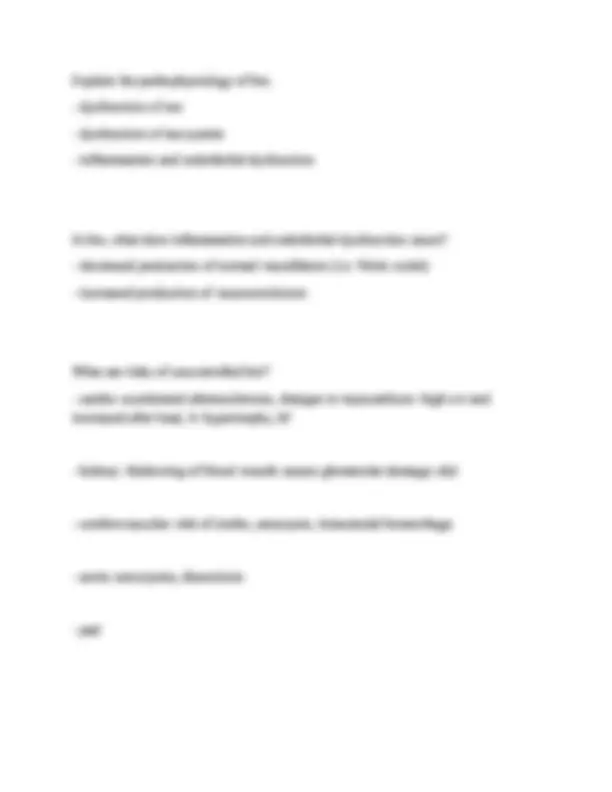
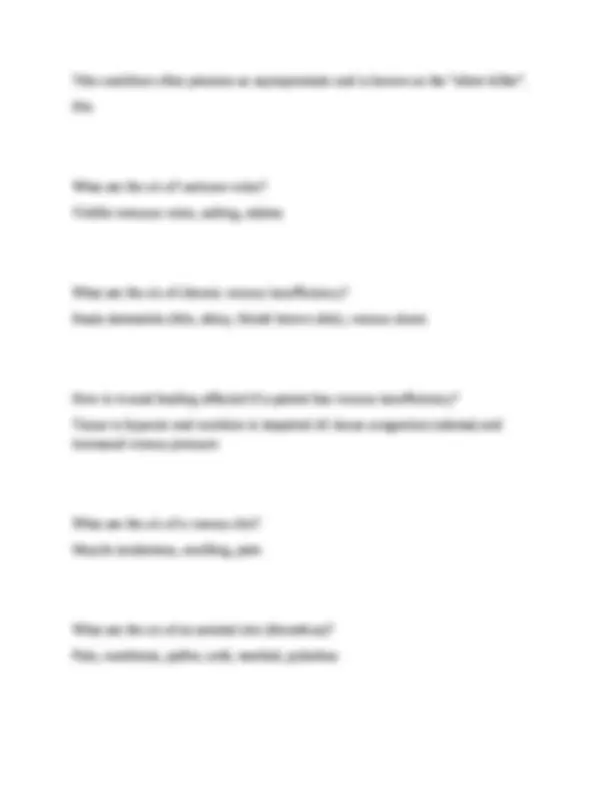
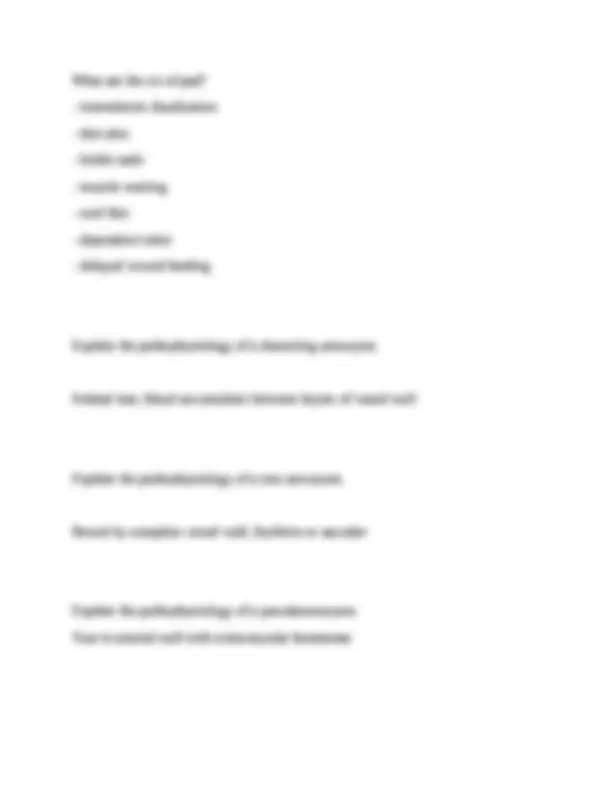
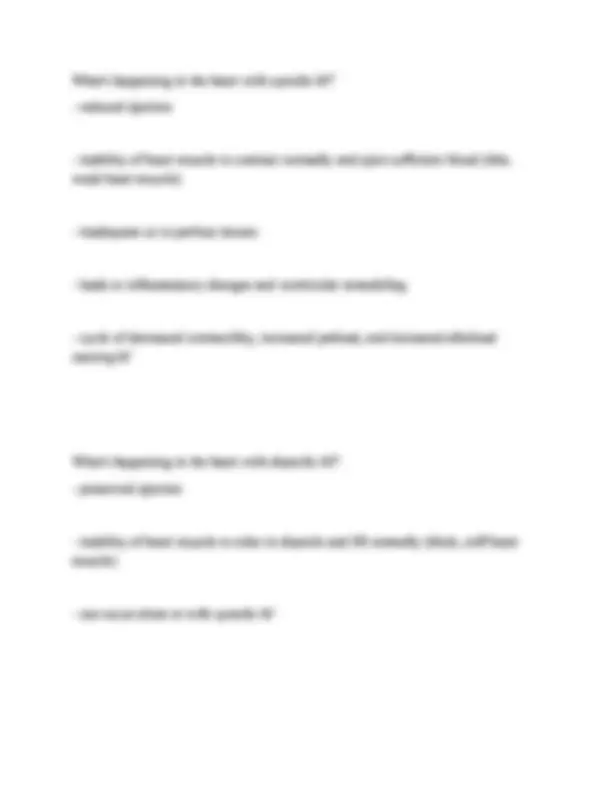
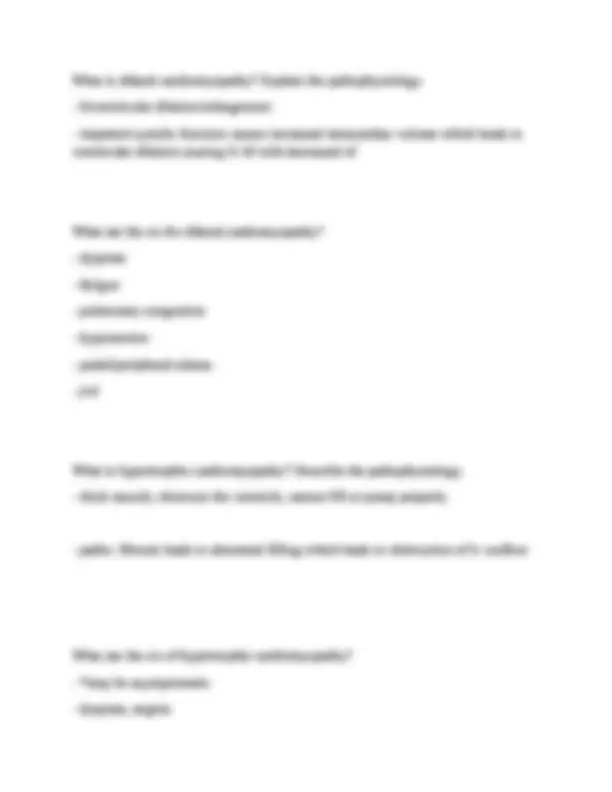
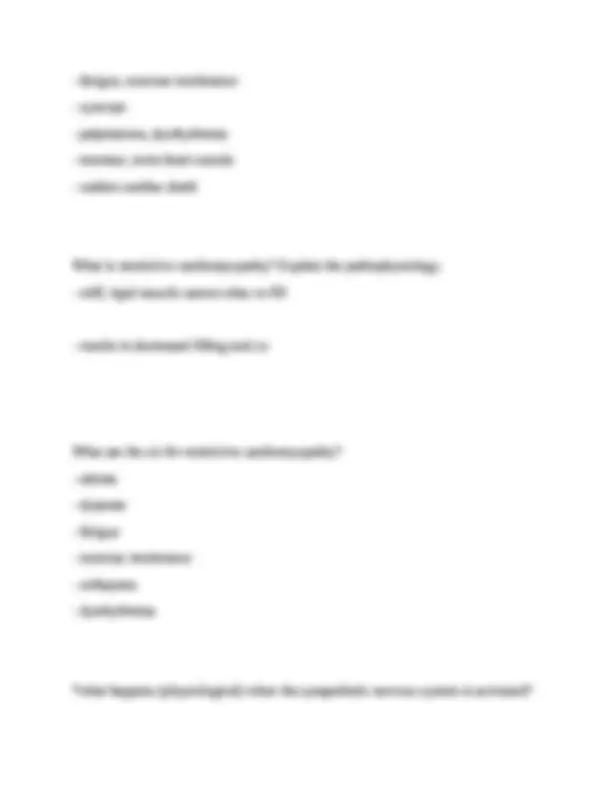
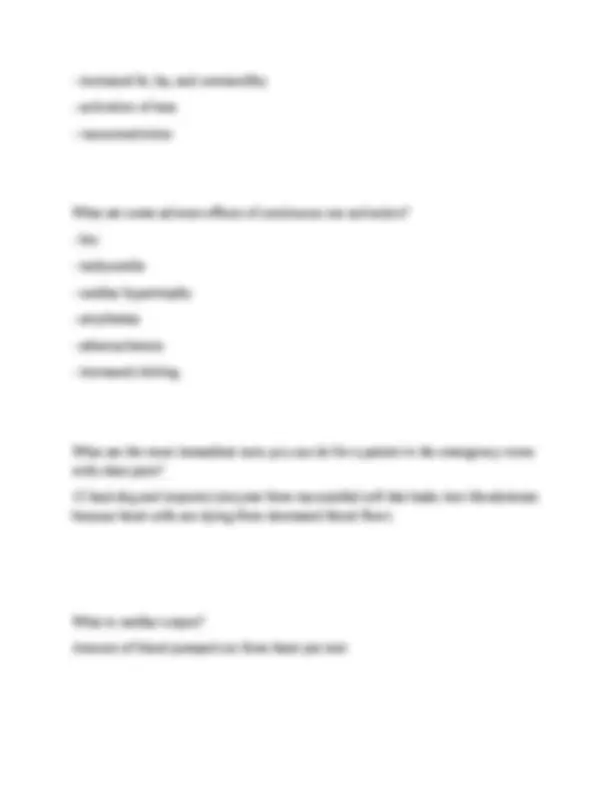

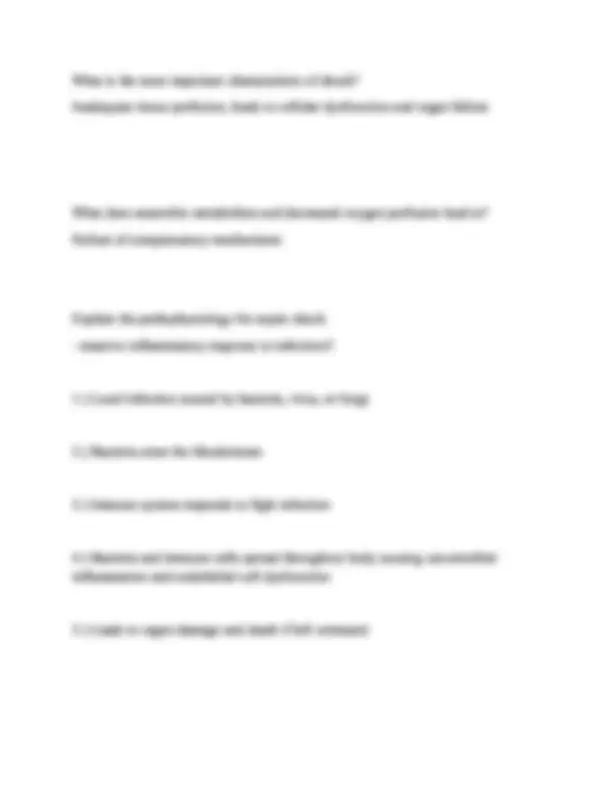

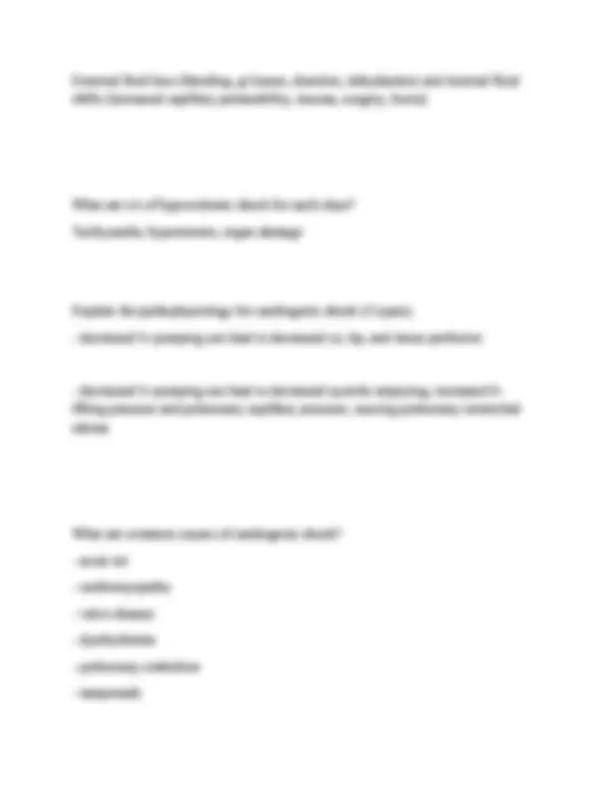
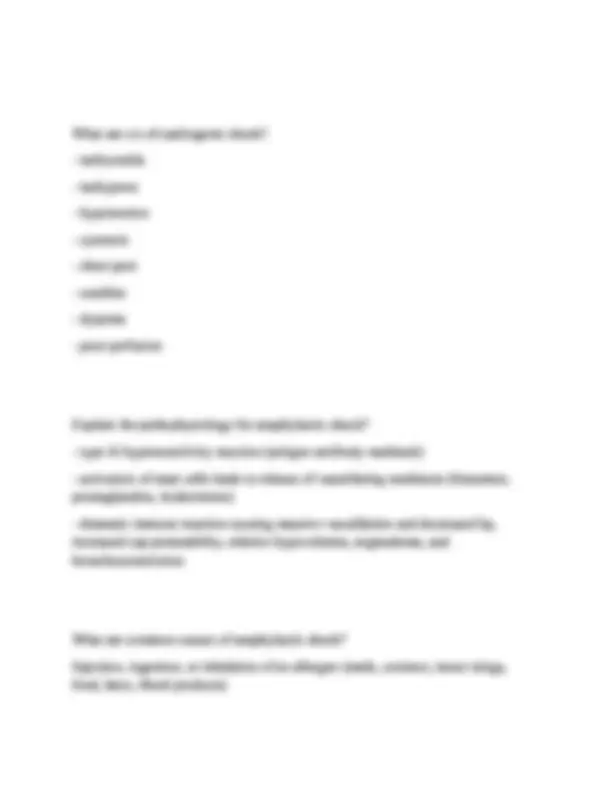
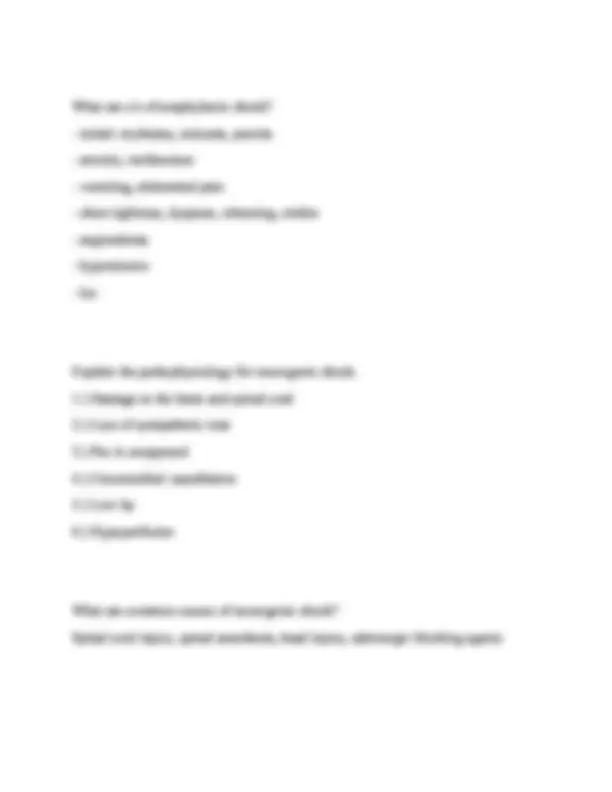
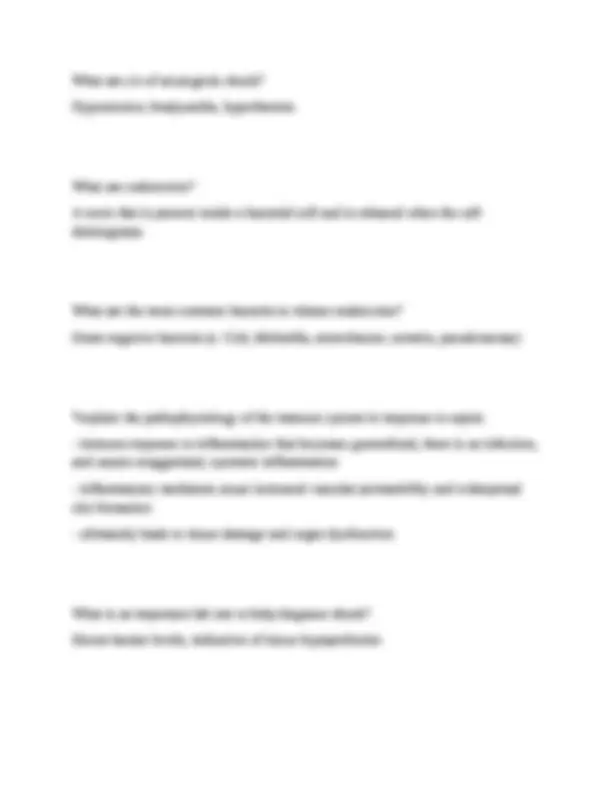
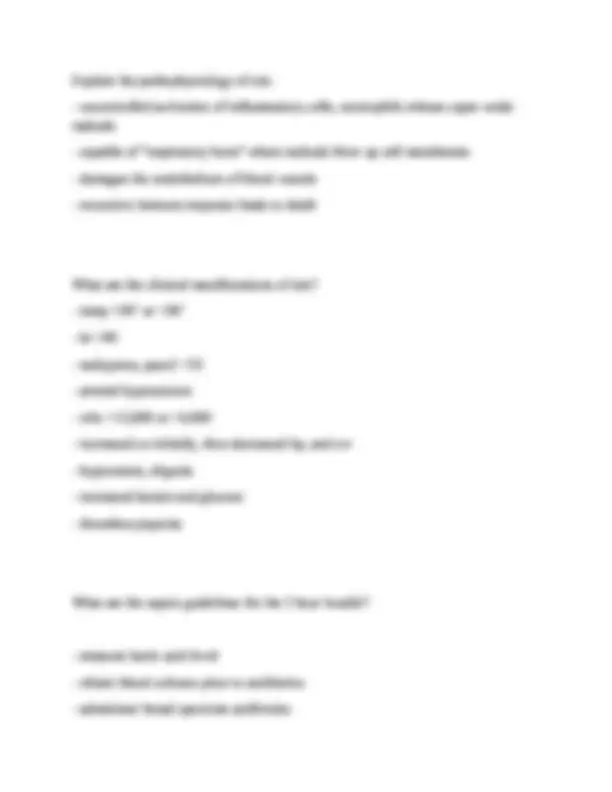
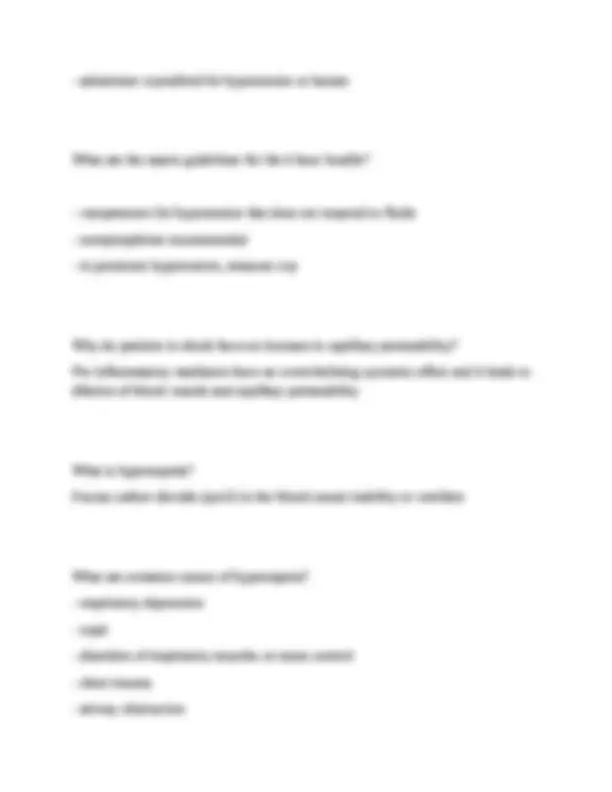
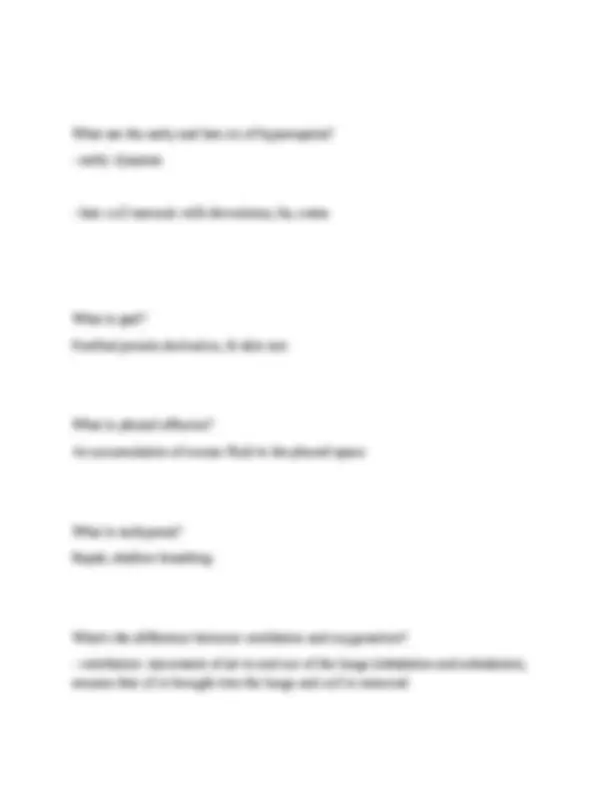
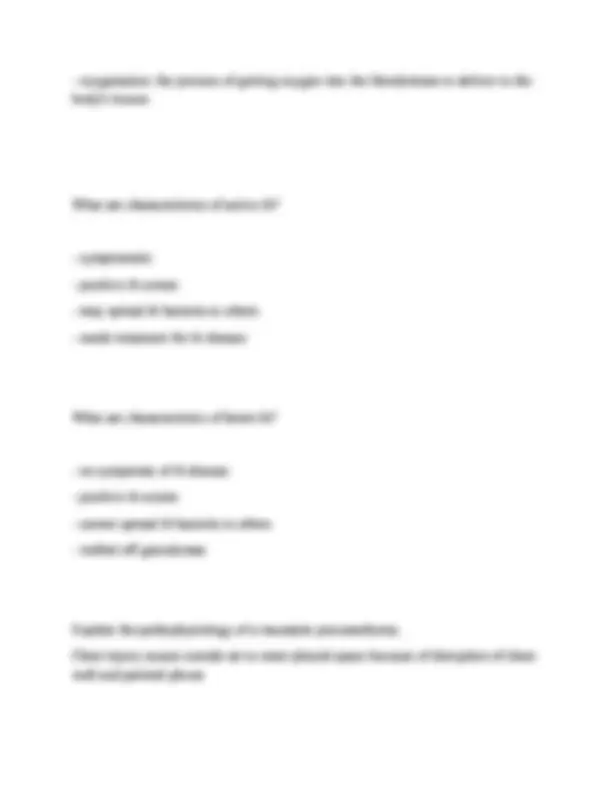
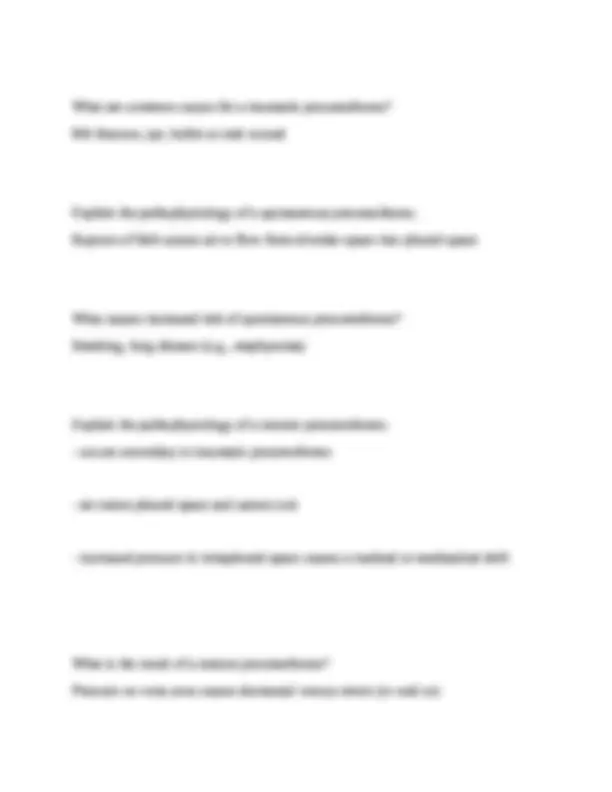
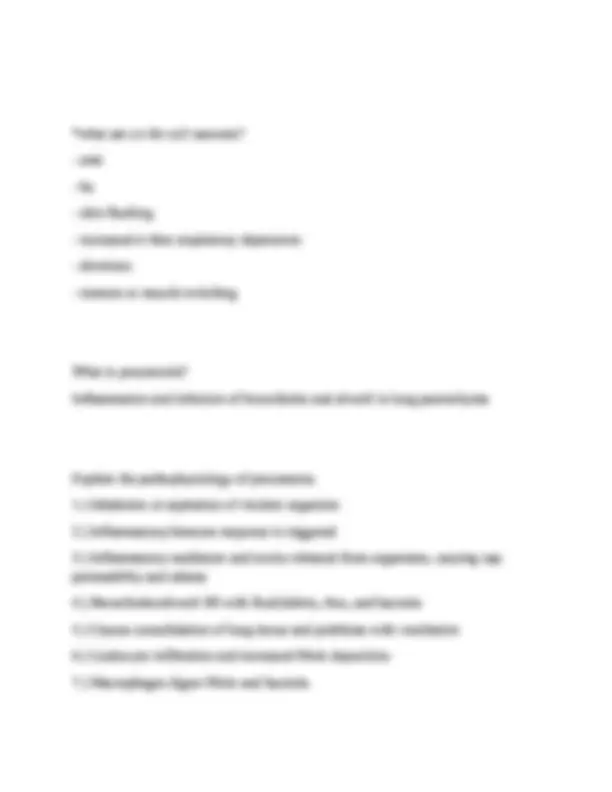
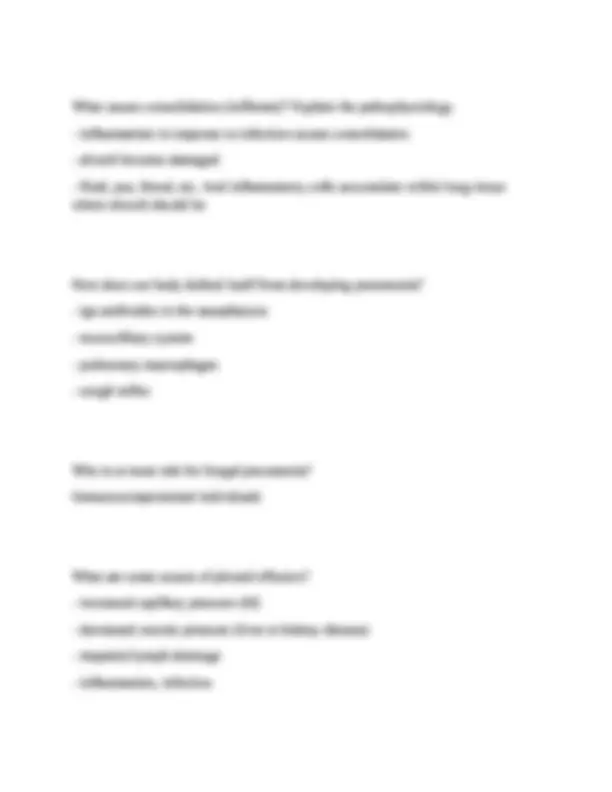
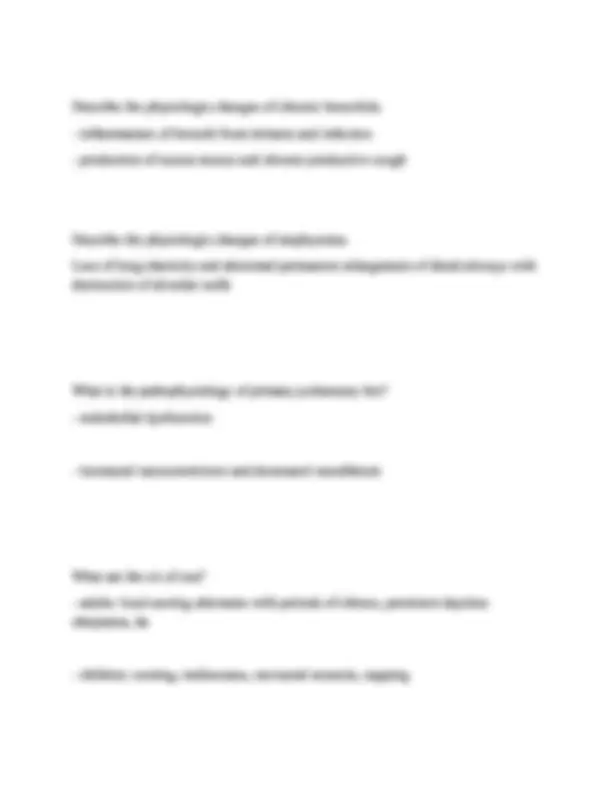
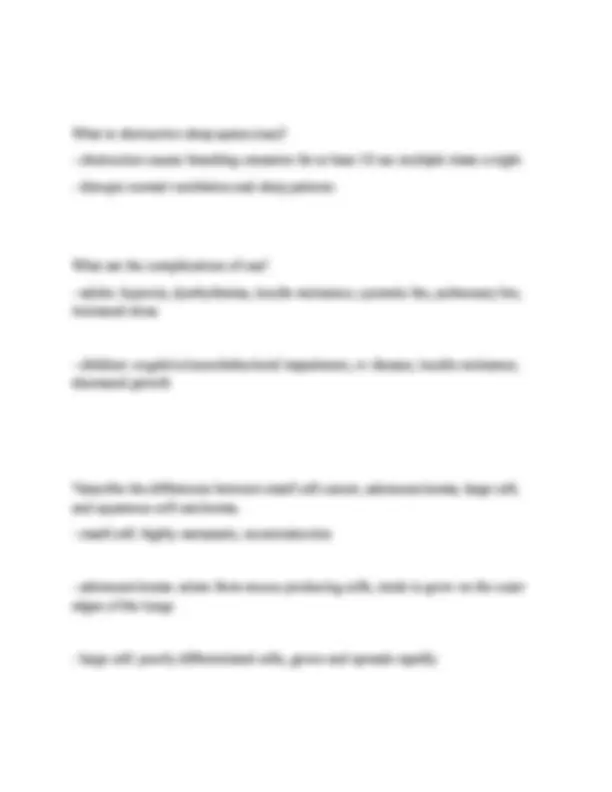
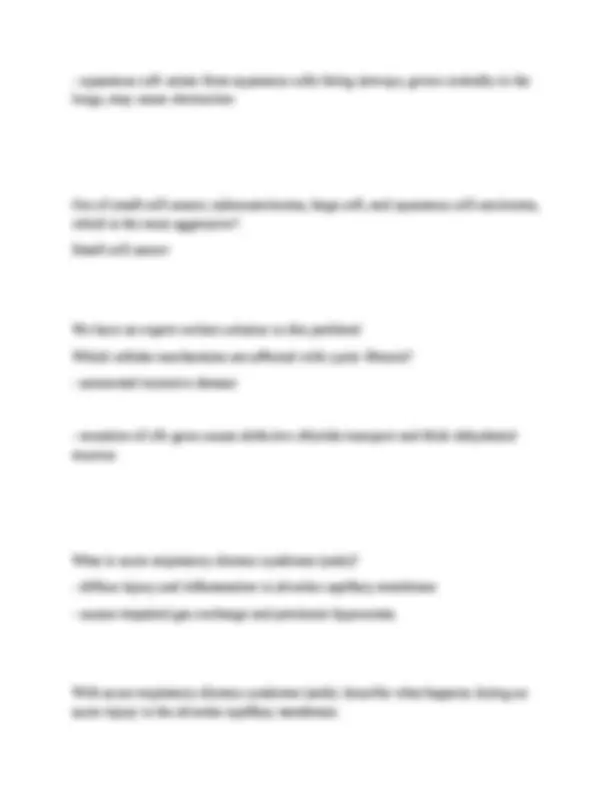
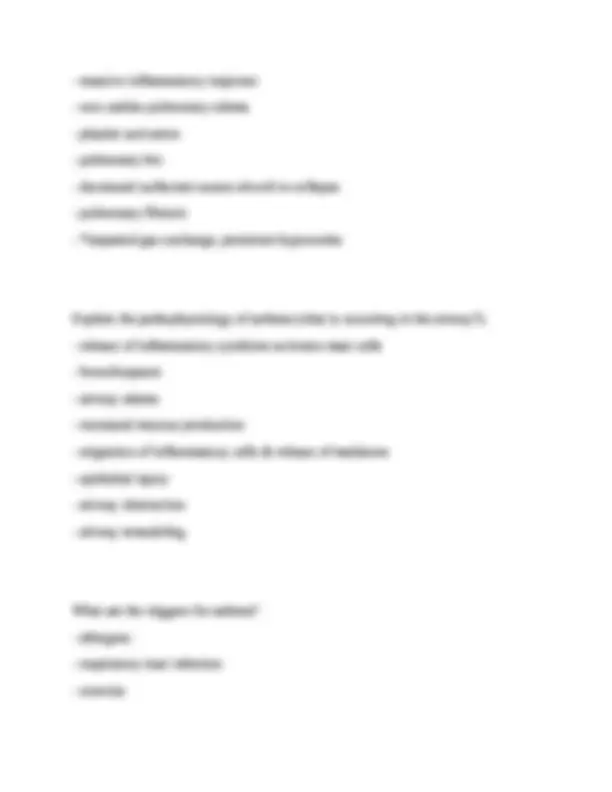
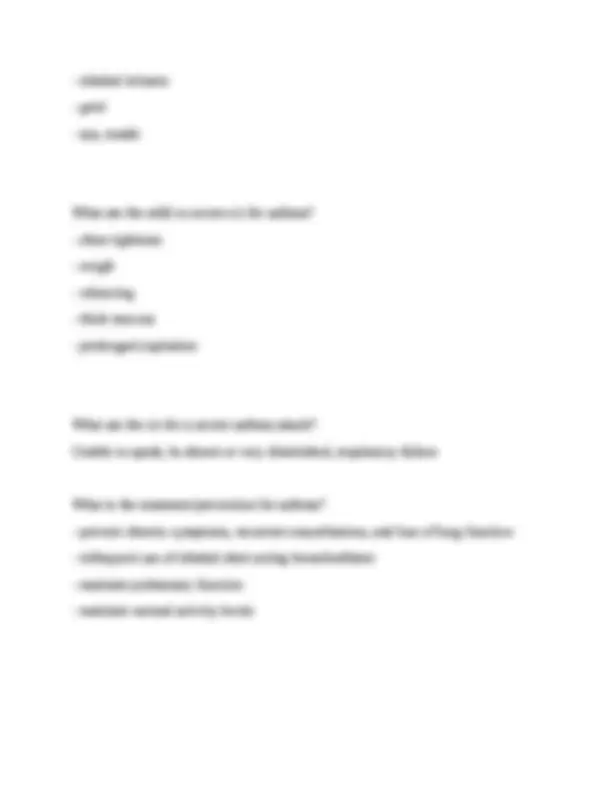


Study with the several resources on Docsity

Earn points by helping other students or get them with a premium plan


Prepare for your exams
Study with the several resources on Docsity

Earn points to download
Earn points by helping other students or get them with a premium plan
Community
Ask the community for help and clear up your study doubts
Discover the best universities in your country according to Docsity users
Free resources
Download our free guides on studying techniques, anxiety management strategies, and thesis advice from Docsity tutors
NURS 6030 Exam 3 QUESTIONS WITH VERIFIED AND DETAILED ANSWERS. A+ GRADED. What's the difference between acute and chronic? - Acute: short duration, rapid onset - Chronic: long term What is gfr? Glomerular filtration rate Why is creatinine important to renal function? Creatinine indicates how well the kidneys are filtering waste from the blood What can happen if there is an obstruction in one kidney? What happens to the other kidney if one is obstructed? - the opposite kidney will be responsible for taking on the additional workload from the obstructed kidney - the opposite kidney can go into hyperfunction and will hypertrophy - could eventually lead to renal failure
Typology: Exams
1 / 46

This page cannot be seen from the preview
Don't miss anything!






































